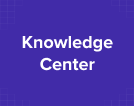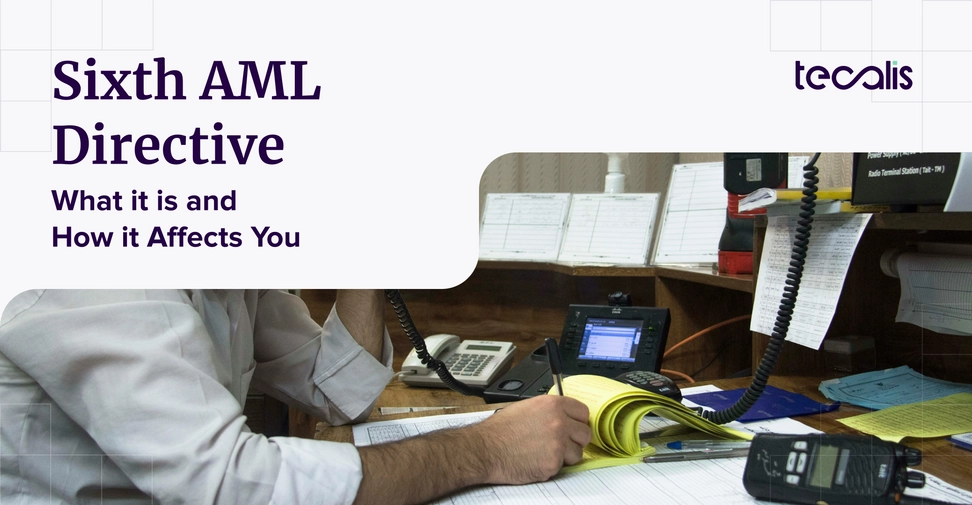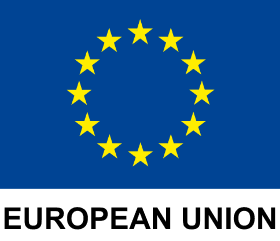Index
Get the latest news right in your inbox
Money laundering and terrorist financing are increasingly sophisticated threats that undermine the integrity of the global financial system by financing illicit activities. In response, the European Union has strengthened its regulatory framework with the new Sixth Anti-Money Laundering Directive (6AMLD), a revision of previous anti-money laundering directives to redraw responsibilities and toughen penalties for collaborating companies.
However, this is not merely an update, but a paradigm shift in the fight against the flow of illicit money. It is important for companies to understand that this is not just a matter of regulatory compliance, but a necessity for protecting both their reputation and avoiding millions in fines.
In this article, we take an in-depth look at the EU's Sixth AML Directive, analyzing its implications and exploring how the most advanced technological solutions are key to navigating this new landscape.
What The EU's Sixth AML Directive Entails
The Sixth AML Directive, known as 6AMLD and formally as EU Directive 2018/1673, came into force in December 2020, with its transition period ending in June 2021. Its fundamental purpose is to strengthen the fight against money laundering throughout the European Union, achieved through legislative harmonization, the elimination of legal loopholes, and the imposition of more severe criminal penalties.
Unlike its predecessors, which focused primarily on prevention through customer due diligence, 6AMLD delves fully into the realm of criminal law. Its goal is to ensure that criminals and the organizations that support them face unified and forceful consequences, regardless of which member state they operate in.
Main Objectives of AML6
The key pillars of the Sixth EU AML Directive are:
- Harmonization of Predicate Offenses: The creation of a harmonized list of 22 predicate offenses which, when they generate profits, constitute money laundering. This unified list eliminates discrepancies between national laws. It includes traditional crimes such as drug trafficking and corruption and explicitly adds new-generation crimes such as cybercrime and environmental crimes.
- Extension of Criminal Liability: Expands the scope of culpability. It is no longer only those who launder money who are prosecuted. Now, aiding and abetting money laundering are also punishable offenses.
- Corporate Liability (Companies): The 6AMLD unequivocally establishes that companies and other legal persons can be held criminally liable for money laundering committed for their benefit. The consequences are serious, including significant fines, exclusion from public tenders, and even dissolution.
- Tougher Penalties: It imposes stricter penalties. For individuals, the maximum prison sentence for money laundering offenses is increased to a minimum of four years. For companies, penalties can reach millions.
- Cross-Border Cooperation: The need for closer judicial and police cooperation between member states is reinforced in order to effectively investigate and prosecute money laundering cases, which, by their nature, are often transnational in character.
How Does 6AMLD Affect You? Implications for Businesses and Professionals
The implications of 6AMLD are profound and far-reaching, affecting a wide range of sectors beyond traditional banking. All entities subject to the AML directives, such as financial institutions, insurers, asset managers, crypto-asset service providers, auditors, notaries, lawyers, and real estate agents, must review and strengthen their compliance systems.
The main implications center on the need for more rigorous due diligence and a more sophisticated risk-based approach. Businesses must actively demonstrate that they understand the specific risks they face and have implemented proportionate and effective measures to mitigate them.
The consequences of non-compliance are more severe than ever:
- Criminal Penalties: The possibility of prison sentences for senior management and key employees introduces an unprecedented level of personal liability.
- Financial Penalties: Fines of up to €5 million or 10% of the company's annual turnover.
- Reputational Damage: Being associated with a money laundering investigation can destroy the trust of customers, investors, and partners.
- Exclusion From Business Opportunities: A conviction can lead to a ban on accessing public funding, participating in tenders, or even the revocation of operating licenses.
How to Avoid AML6 Sanctions?
The answer to avoiding penalties lies in being proactive and adopting advanced technology. The complexity of the sixth anti-money laundering directive, coupled with the complexity of modern criminal networks, means that manual processes are insufficient and prone to error. Therefore, we will need robust compliance for the future, thanks to the implementation of comprehensive KYC (Know Your Customer) and AML systems such as those offered by Tecalis.

Identity Verification (KYC) Solutions to Comply With AML6
The sixth anti-money laundering directive requires robust technological capabilities. The rule is clear: organizations must have the necessary resources and procedures in place to identify, assess, and mitigate money laundering risks. This is where RegTech technology becomes a company's greatest ally.
State-of-the-art KYC/AML solutions, such as Tecalis Identity, offer a holistic solution designed to overcome the challenges posed by AML6. These solutions are automated and reinforce compliance at every stage.
Some of the features that make Tecalis Identity the perfect partner are:
- An automated KYC system that verifies documents and identifies individuals with biometric markers.
- Incorporating lists such as PEPs, those sanctioned by administrations, or watchlists.
- Constant monitoring of transactions and behaviors.
- Complete audits and records.
AML6 and KYC: How Have Know Your Customer Processes Changed With 6AMLD?
6AMLD has raised the bar for KYC processes. Customer identity verification, a fundamental pillar of KYC, must be more thorough and continuous.
- From Static to Dynamic Verification: KYC is no longer a one-off event during onboarding. The directive drives the need for ongoing due diligence. This involves monitoring transactions and the customer's profile throughout the business relationship to detect changes in their risk behavior.
- Identification of The Ultimate Beneficial Owner (UBO): The pressure to accurately identify the ultimate beneficiary of complex corporate structures has intensified. Technological solutions make it possible to automate the consultation of commercial registers and global databases to untangle these structures and ensure transparency.
- Risk-Based Approach: Not all customers can be treated equally. Advanced KYC platforms use AI and machine learning to assign a risk score to each customer based on multiple variables (geography, transaction type, business profile, etc.), allowing companies to apply simplified, standard, or enhanced due diligence measures as appropriate.

How to Manage Money Laundering Risk in The Customer Journey?
Integrating AML compliance into the customer journey without creating friction is one of the biggest challenges. A slow and cumbersome onboarding experience can lead to customer churn. Technology makes it possible to balance security and usability.
- Frictionless Digital Onboarding: The best solutions offer a 100% digital process that is completed in seconds. Using technologies such as biometric verification and passive proof of life, robust but seamless verification is guaranteed.
- OCR and NFC Technology: The use of second-generation Optical Character Recognition allows data to be extracted from identity documents instantly and without errors. NFC technology goes one step further, allowing the chip in passports and electronic identity documents to be read, offering maximum security and document authenticity, and preventing forgery.
- Intelligent Transaction Monitoring: Advanced AML systems monitor transactions in real time. Machine learning algorithms learn each customer's behavior patterns and generate automatic alerts for any suspicious deviations (such as unusually large transactions, operations with high-risk jurisdictions, etc.), drastically reducing false positives and allowing compliance analysts to focus on real threats.

Automating Compliance With The Sixth Anti-Money Maundering Directive: Benefits and Key Aspects
Compliance with the sixth anti-money laundering directive can become a significant competitive advantage.
Companies that invest in cutting-edge AML technology discover benefits that go far beyond avoiding fines:
- Improved Operational Efficiency: Automating manual and repetitive tasks (such as reviewing documents or checking sanctions lists) frees up compliance teams, allowing them to focus on higher value-added tasks, such as investigating complex cases and strategic risk analysis. This translates into a reduction in operating costs of up to 90%.
- Increased Customer Conversion: A fast, intuitive, and secure onboarding process is a key differentiator in the digital marketplace. According to market research, up to 40% of users abandon a sign-up process if they find it too long or invasive. By optimizing this first interaction, companies increase their conversion rates and improve customer satisfaction from day one.
- Data-Driven Decisions: The digitization of compliance generates a large amount of data. Advanced platforms offer dashboards and analytics tools that provide a 360-degree view of the risk profile of the customer base, enabling management to make more informed strategic decisions.
- Scalability and Adaptability: In an ever-changing regulatory environment, agility is crucial. Cloud-based solutions with flexible architectures allow companies to quickly adapt to new regulations, expand into new markets with different legal requirements, and scale their operations without compliance becoming a bottleneck.
- Brand Strengthening: Ultimately, a visible and effective commitment to combating financial crime reinforces the company's reputation as a secure, reliable, and responsible entity, attracting both customers and investors.
New European oversight, through the newly created Anti-Money Laundering Authority (AMLA), which will be fully operational in the coming years, will further increase the pressure on regulated entities. The AMLA will have the power to directly supervise high-risk entities and impose sanctions, making the need for automated, world-class compliance systems even more urgent.
Smart and Secure Anti-Money Laundering Systems
The Sixth AML Directive marks a turning point in European policy against financial crime. Its focus on criminal harmonization, corporate liability, and tougher sanctions sends a clear message: there is zero tolerance for money laundering. For businesses, adaptation is no longer an option, but an unavoidable obligation.
Ignoring the requirements of 6AMLD is a high-risk gamble with potentially devastating consequences. However, approaching compliance solely from the perspective of fear of punishment is a limited view. The real opportunity lies in leveraging this regulatory requirement as a catalyst for digital business transformation.
The implementation of advanced technological solutions such as Tecalis Identity allows organizations not only to comply with AML6 regulations in an efficient and robust manner, but also to optimize their operations, radically improve the customer experience, and build a more secure and scalable foundation for future growth. In the digital age, intelligence and automation are not just compliance tools, but the foundations of trust and competitiveness. Companies that understand this will not only survive the new regulatory paradigm, but thrive in it.
























